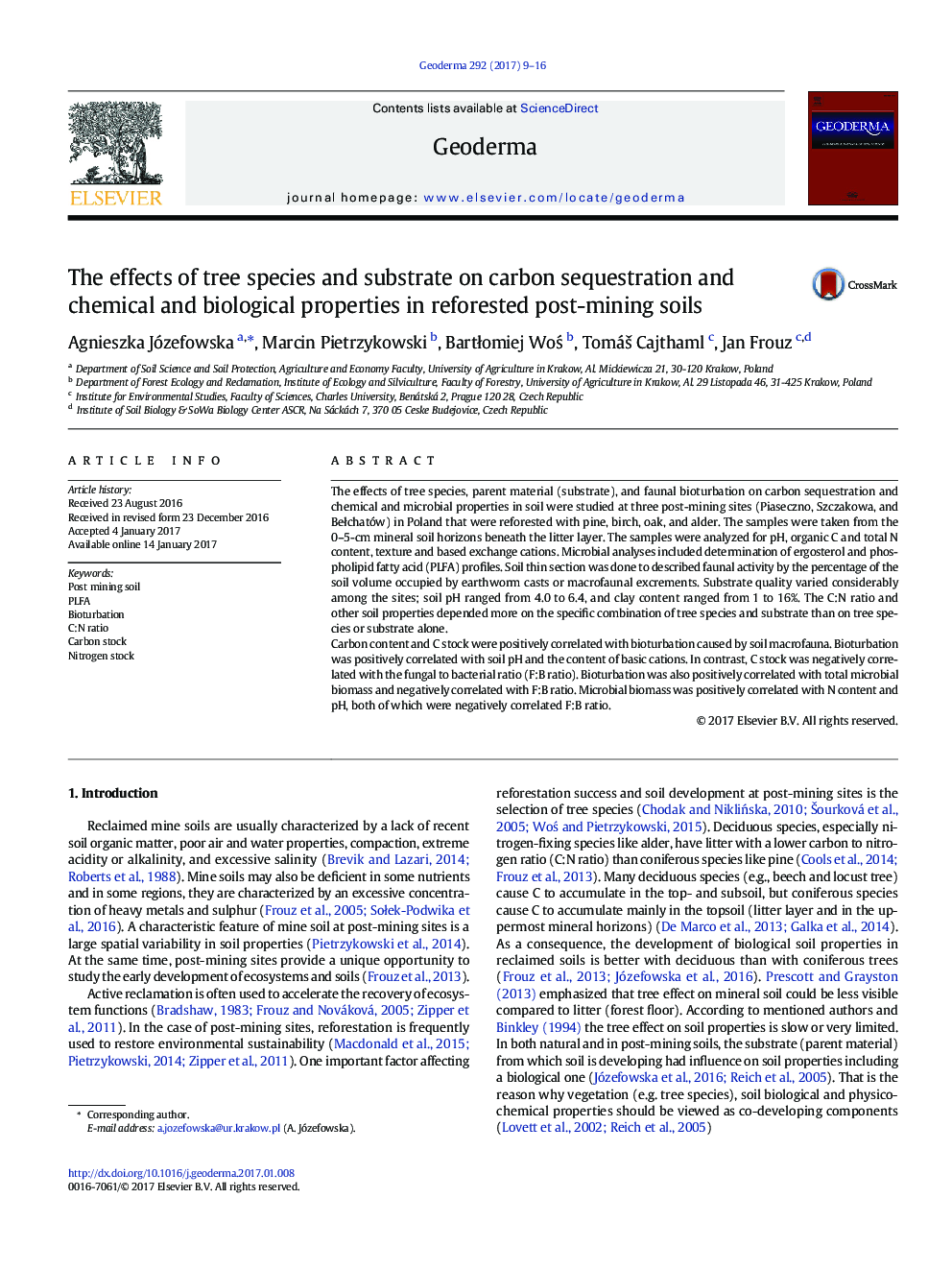| کد مقاله | کد نشریه | سال انتشار | مقاله انگلیسی | نسخه تمام متن |
|---|---|---|---|---|
| 5770690 | 1629425 | 2017 | 8 صفحه PDF | دانلود رایگان |
- Soil biological and physico-chemical properties were investigated in varied tree stands on varied parent material.
- Faunal activity was the best predictor of C stock.
- Bacterial biomass was the best predictor of N stock.
- The C:N ratio in topsoil was not directly influenced by the tree species.
The effects of tree species, parent material (substrate), and faunal bioturbation on carbon sequestration and chemical and microbial properties in soil were studied at three post-mining sites (Piaseczno, Szczakowa, and BeÅchatów) in Poland that were reforested with pine, birch, oak, and alder. The samples were taken from the 0-5-cm mineral soil horizons beneath the litter layer. The samples were analyzed for pH, organic C and total N content, texture and based exchange cations. Microbial analyses included determination of ergosterol and phospholipid fatty acid (PLFA) profiles. Soil thin section was done to described faunal activity by the percentage of the soil volume occupied by earthworm casts or macrofaunal excrements. Substrate quality varied considerably among the sites; soil pH ranged from 4.0 to 6.4, and clay content ranged from 1 to 16%. The C:N ratio and other soil properties depended more on the specific combination of tree species and substrate than on tree species or substrate alone.Carbon content and C stock were positively correlated with bioturbation caused by soil macrofauna. Bioturbation was positively correlated with soil pH and the content of basic cations. In contrast, C stock was negatively correlated with the fungal to bacterial ratio (F:B ratio). Bioturbation was also positively correlated with total microbial biomass and negatively correlated with F:B ratio. Microbial biomass was positively correlated with N content and pH, both of which were negatively correlated F:B ratio.
Journal: Geoderma - Volume 292, 15 April 2017, Pages 9-16
